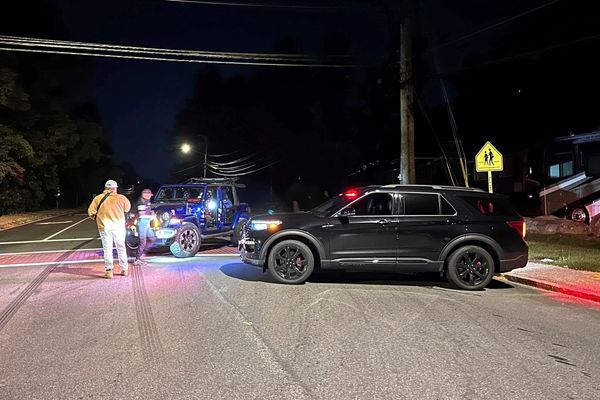Melanoma skin cancer is the fifth most common cancer in the UK, with almost 17,000 new cases diagnosed each year.
But thousands of people could be walking around not knowing they have a cancer that kills 2,300 people a year. An estimated 21% of melanomas were missed in the first year of the pandemic, with a 68% drop in diagnoses between March and June that year, according to the latest figures from Melanoma UK.
May is Skin Cancer Awareness Month, so the charity is urged people to regularly check their skin for moles, lesions or other changes that may indicate a melanoma or a non-melanoma skin cancers. Roughly 156,000 cases of non-melanoma skin cancer are diagnosed each year, but it can be less serious than melanomas.
READ MORE: The 'red flag' symptoms of bowel cancer to watch out for
Diane Cannon, who works at Melanoma UK, was diagnosed with a non-melanoma skin cancer after spotting a growing lump on her nostril. She picked it up early and only required precision surgery to remove it thanks to regular close inspections she does on her skin due to a family history of skin cancer. Her niece Claire died of a melanoma she thought was gone, and her dad, brother and two sisters have all had non-melanoma skin cancer.
She advised people to check their own skin an ABCDE list used by doctors when they look at lumps, spots and moles. According to Melanoma UK, the warning signs of a potentially cancerous mole or growth that should be shown to a doctor are:
- asymmetry - a mole with an irregular or uneven shape
- border - a mole with an uneven border
- colour - a mole with two or more colours
- diameter - a mole larger than 5mm
- elevation - a mole becoming raised
- firm - a mole that feels firm or solid
- growing - a mole showing signs of change
Melanoma can appear anywhere on the body, even under nails, but they're most common the back and legs, according to the NHS. The health service's website urged people to look out for any changes in the shape, size or colour of moles, and for any that bleed or become crusty, itchy or sore. It said: "See a GP as soon as possible if you notice changes in a mole, freckle or patch of skin, particularly if the changes happen over a few weeks or months."
Non-melanoma skin cancer is often first indicated by the appearance of a persistent and slowly progressing "lump or discoloured patch on the skin", according to the NHS. They most often occuron areas of skin regularly exposed to the sun, such as the face, ears, hands, shoulders, upper chest and back. Cancerous lumps are usually red and firm, sometimes turning into ulcers. Cancerous patches are usually flat and scaly. You should get them checked by a GP if it has not healed after four weeks.
Diane said: "Take photographs of your body, front and back. Make sure you're even checking your scalp, the soles of your feet, look at your fingernails. Take a picture of the front and a picture of the back, zoom in, have a little look around, see if anything looks different from previously. If it does, then take an individual image of the mole or lesion you don't like the look of, and monitor it. If it wasn't there last month, something isn't right - get it checked out."







